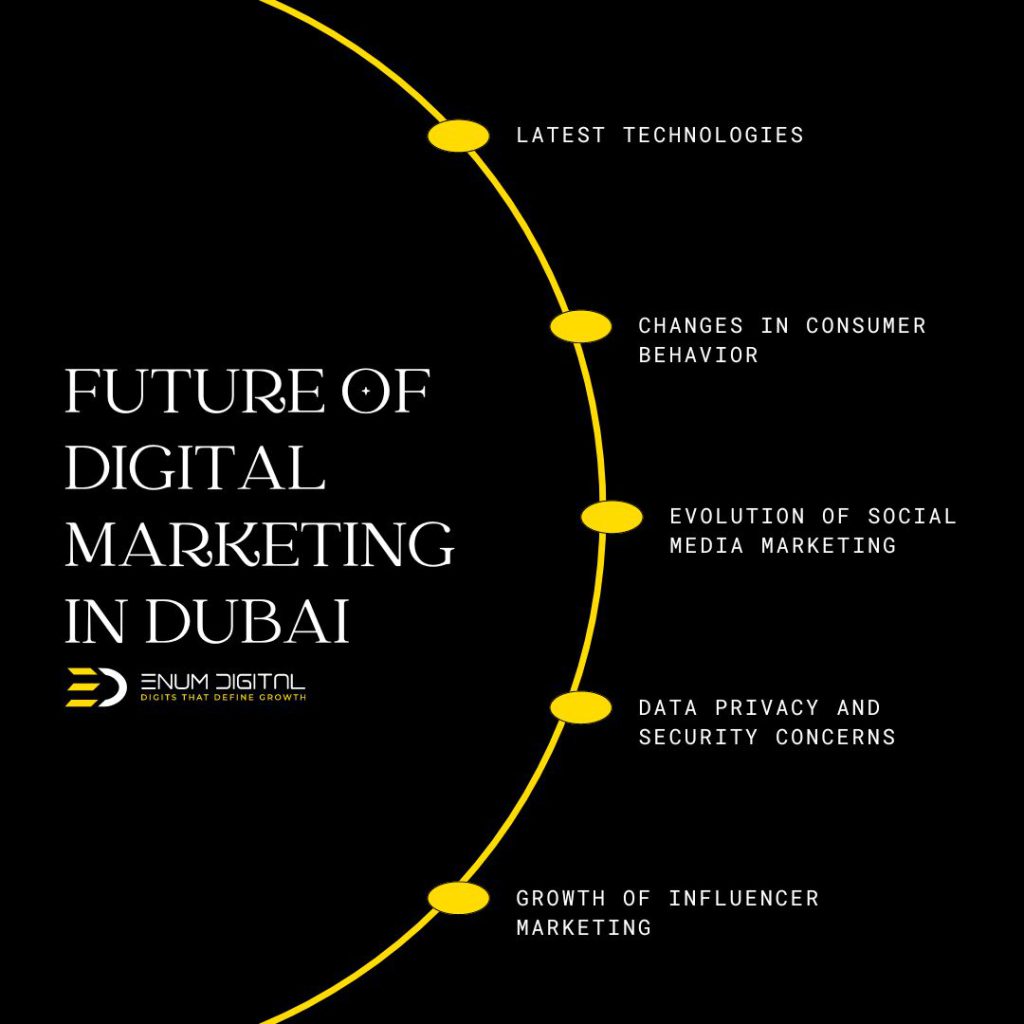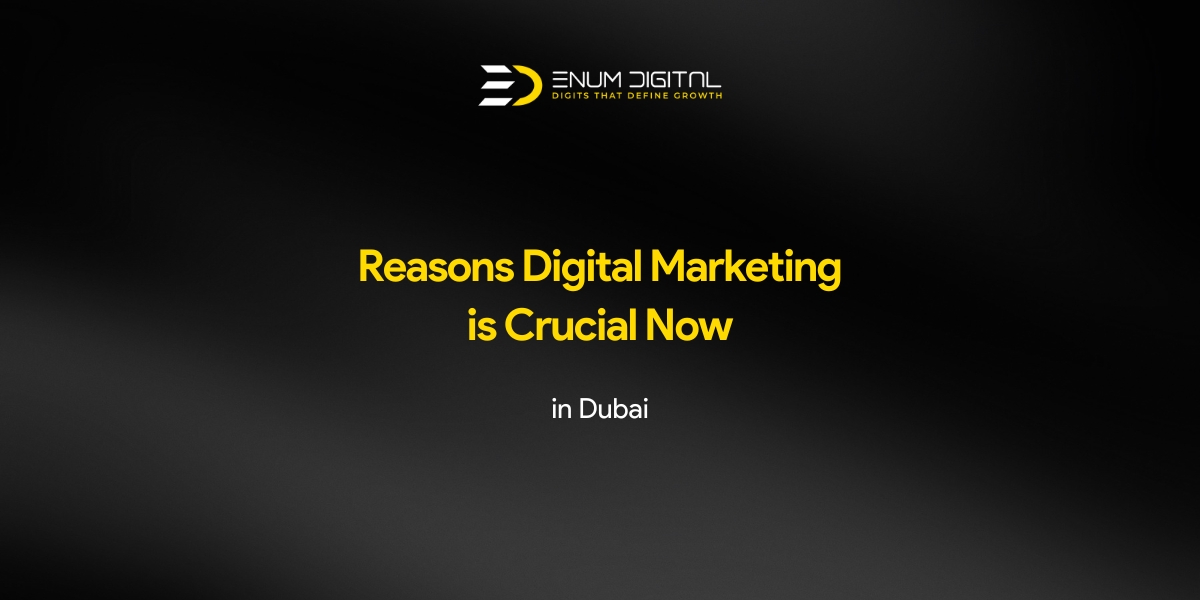As digital marketing continues to evolve at a rapid pace, staying informed about emerging trends and developments is crucial for businesses looking to maintain a competitive edge. Here’s a closer look at the current trends and why it’s important to keep up with the changing landscape.
Overview of Current Trends
Digital marketing is undergoing significant transformations driven by technological advancements and shifts in consumer behavior. Some of the key trends shaping the future of digital marketing include:
- Artificial Intelligence (AI) and Machine Learning: AI and machine learning are increasingly being used to analyze consumer data, predict trends, and automate marketing tasks. These technologies allow for more precise targeting, personalization, and efficiency in marketing campaigns.
- Augmented Reality (AR) and Virtual Reality (VR): AR and VR are creating new opportunities for interactive and immersive experiences. Brands are using these technologies to offer virtual try-ons, interactive product demos, and engaging content that captivates audiences.
- Voice Search Optimization: With the growing use of smart speakers and voice assistants, optimizing for voice search is becoming more important. Businesses need to adapt their SEO strategies to accommodate natural language queries and voice-based interactions.
- Short-Form Video Content: Platforms like TikTok and Instagram Reels are popularizing short-form video content. This format is effective for capturing attention quickly and engaging audiences with creative and bite-sized content.
- Data Privacy and Security: As consumers become more concerned about their data privacy, regulations such as GDPR and CCPA are impacting how businesses collect and use personal data. Ensuring compliance and maintaining transparency is essential for building trust.
- Influencer Marketing Growth: Influencer marketing continues to be a powerful tool for reaching target audiences. The focus is shifting towards micro and nano-influencers who offer more authentic engagement and niche audience connections.
- Sustainability and Social Responsibility: There is a growing demand for brands to demonstrate their commitment to sustainability and social responsibility. Consumers are increasingly favoring brands that align with their values and contribute positively to society.
Importance of Staying Updated
In the fast-moving world of digital marketing, staying updated on the latest trends and technologies is vital for several reasons:
- Competitive Advantage: By keeping up with current trends, businesses can gain a competitive edge over rivals who may be slower to adapt. This allows for the implementation of innovative strategies that capture audience interest and drive better results.
- Enhanced Customer Engagement: Understanding new trends helps businesses create more relevant and engaging content. This leads to improved customer experiences and stronger connections with their target audience.
- Informed Decision-Making: Staying informed about industry changes ensures that marketing decisions are based on the latest insights and data. This helps in making strategic choices that align with evolving consumer preferences and market conditions.
- Adaptability: The digital landscape is constantly changing, and being aware of emerging trends allows businesses to adapt quickly. This flexibility helps in addressing new challenges and seizing opportunities as they arise.
- Effective Resource Allocation: Knowledge of current trends helps businesses allocate their marketing resources more effectively. Investing in the right technologies and strategies can lead to better ROI and more successful campaigns.
The future of digital marketing is shaped by rapid technological advancements and evolving consumer behaviors. Staying updated on these changes is essential for businesses to remain competitive, engage their audiences effectively, and make informed marketing decisions.

Latest Technologies in Digital Marketing
The landscape of digital marketing is continuously evolving, driven by advancements in technology. Three prominent technologies shaping the future of digital marketing are Artificial Intelligence (AI), Augmented Reality (AR) and Virtual Reality (VR), and Blockchain technology. Here’s a closer look at each:
Artificial Intelligence (AI) and Machine Learning
AI and Machine Learning are transforming digital marketing by enabling more sophisticated data analysis and automating various marketing tasks. Here’s how they are making an impact:
- Personalization: AI algorithms analyze vast amounts of data to understand consumer preferences and behaviors. This allows businesses to deliver highly personalized content and recommendations, enhancing customer experiences and increasing engagement.
- Predictive Analytics: Machine learning models can predict future consumer behavior based on historical data. This helps marketers anticipate trends, optimize campaigns, and make informed decisions to stay ahead of the competition.
- Chatbots and Customer Service: AI-powered chatbots provide instant responses to customer inquiries, improving service efficiency and availability. They can handle common questions, assist with purchases, and gather valuable customer insights.
- Content Creation: AI tools can assist in generating content ideas, writing copy, and even creating visual content. This streamlines content production and helps maintain a consistent brand voice across various channels.
Augmented Reality (AR) and Virtual Reality (VR)
AR and VR technologies are creating immersive and interactive experiences that capture consumer attention in new ways. Here’s how they are being used in digital marketing:
- AR Experiences: Augmented Reality overlays digital content onto the real world through devices like smartphones or AR glasses. Brands use AR for virtual try-ons, interactive product demos, and location-based promotions. For example, cosmetic brands allow users to see how products look on their skin before purchasing.
- VR Experiences: Virtual Reality provides fully immersive digital environments. Brands use VR to create virtual store tours, product demonstrations, and engaging experiences that transport users to different settings. This technology is particularly effective in industries like real estate and travel.
- Enhanced Engagement: Both AR and VR offer interactive experiences that engage users in ways traditional media cannot. This heightened engagement can lead to increased brand awareness and stronger emotional connections with consumers.
Blockchain Technology and Its Effects
Blockchain technology is gaining attention for its potential to transform various aspects of digital marketing. Here’s how it impacts the industry:
- Transparency and Trust: Blockchain provides a decentralized and immutable ledger of transactions. This transparency can help build trust between brands and consumers by ensuring authenticity and preventing fraud in areas like ad placements and influencer marketing.
- Ad Fraud Prevention: Blockchain can track and verify ad impressions and clicks, reducing the risk of ad fraud. By providing a transparent record of interactions, brands can ensure they are paying for genuine engagements.
- Data Security: Blockchain’s encryption and decentralized nature enhance data security. This can help protect consumer data and address privacy concerns, which are increasingly important in digital marketing.
- Smart Contracts: Blockchain enables the use of smart contracts—self-executing contracts with terms directly written into code. In digital marketing, this can streamline processes like payments to influencers, automating transactions based on pre-set conditions.
Changes in Consumer Behavior
Consumer behavior is evolving rapidly, influenced by technological advancements and shifting societal values. Here’s a look at three major changes:
Shift Towards Personalized Experiences
Consumers increasingly expect tailored experiences that cater to their individual preferences and needs. This shift is driven by:
- Customized Recommendations: Brands are using data to provide personalized product recommendations based on past behavior, preferences, and browsing history. This approach not only enhances the shopping experience but also increases the likelihood of conversions.
- Targeted Advertising: Advanced analytics and AI enable brands to deliver ads that resonate with specific segments of their audience. Personalized ads based on user interests and demographics lead to higher engagement and better return on investment.
- Enhanced Customer Service: Personalization extends to customer service, where tailored interactions and support improve satisfaction. Chatbots and AI-driven systems offer personalized responses and solutions based on individual customer profiles.
Increased Use of Voice Search and Smart Devices
The rise of voice search and smart devices is significantly impacting how consumers find and interact with information:
- Voice Search Popularity: With the growing use of voice assistants like Amazon’s Alexa, Google Assistant, and Apple’s Siri, consumers are increasingly using voice commands to search for information, shop online, and manage daily tasks. This shift necessitates optimization for voice search, focusing on natural language and conversational queries.
- Smart Device Integration: Smart devices such as home assistants, smart speakers, and wearable technology are becoming integral to daily life. These devices provide convenient ways for consumers to interact with brands, access information, and make purchases.
- Impact on SEO: As voice search becomes more prevalent, SEO strategies need to adapt to accommodate longer, conversational search queries. Brands should focus on optimizing for voice search to stay relevant in this evolving landscape.
Growing Focus on Eco-Conscious Products
Consumers are increasingly prioritizing sustainability and ethical practices when making purchasing decisions:
- Demand for Sustainable Products: There is a growing preference for products that are environmentally friendly, ethically sourced, and produced with minimal waste. Brands that align with these values and offer sustainable options can attract and retain eco-conscious consumers.
- Transparency and Accountability: Consumers are demanding greater transparency from brands regarding their environmental impact and supply chain practices. Businesses are responding by providing detailed information about their sustainability efforts and certifications.
- Impact on Brand Loyalty: Companies that demonstrate a genuine commitment to sustainability often see increased brand loyalty. Consumers are more likely to support brands that align with their values and contribute positively to the environment.
Changes in consumer behavior reflect a growing demand for personalized experiences, the increased use of voice search and smart devices, and a strong focus on sustainability. Understanding and adapting to these changes is essential for businesses aiming to meet evolving consumer expectations and stay competitive in the digital market.
The Evolution of Social Media Marketing
New Social Media Platforms and Features
The social media landscape is constantly evolving, with new platforms and features emerging to capture user attention:
- Emerging Platforms: New social media platforms frequently enter the market, offering unique features and opportunities for engagement. Staying updated on these platforms allows brands to tap into new audiences and explore fresh marketing opportunities.
- Platform Features: Established platforms continuously introduce new features, such as Instagram’s Reels or LinkedIn’s live video. Leveraging these features can enhance engagement and help brands reach their target audience in innovative ways.
The Impact of Short-Form Video Content
Short-form video content is becoming increasingly popular across social media platforms:
- Engagement: Platforms like TikTok and Instagram Reels have popularized short, engaging videos that capture users’ attention quickly. This format is effective for increasing reach and encouraging interaction.
- Content Creation: Short-form videos allow for creative, bite-sized content that can drive brand awareness and foster viral trends. Brands can use this format to showcase products, share behind-the-scenes content, or participate in trending challenges.
Changes in Social Media Algorithms
Social media algorithms are continually evolving, influencing how content is distributed and seen:
- Algorithm Updates: Platforms regularly update their algorithms to prioritize content that drives engagement. Understanding these changes helps brands tailor their content strategies to maintain visibility and reach.
- Content Relevance: Algorithms often favor content that is relevant to users’ interests and interactions. Brands need to focus on creating high-quality, engaging content that resonates with their audience to perform well in algorithm-driven feeds.
Data Privacy and Security Concerns
New Regulations and Their Effects
Recent regulations have introduced stricter data privacy and security requirements:
- GDPR and CCPA: Regulations like the General Data Protection Regulation (GDPR) and the California Consumer Privacy Act (CCPA) impose strict rules on data collection, storage, and usage. Compliance with these regulations is crucial for avoiding legal issues and building consumer trust.
- Impact on Marketing: These regulations affect how brands collect and manage user data for marketing purposes. Businesses must ensure they obtain explicit consent and provide transparency about data usage.
Best Practices for Protecting Data
Protecting user data is essential for maintaining trust and complying with regulations:
- Data Encryption: Implementing encryption protocols helps secure data during transmission and storage, protecting it from unauthorized access.
- Access Controls: Restricting access to sensitive data to authorized personnel only reduces the risk of data breaches and misuse.
Balancing Personalization with Privacy
Finding the right balance between personalized marketing and privacy is crucial:
- Transparent Practices: Clearly communicate how user data is collected, used, and protected. Providing users with control over their data preferences can enhance trust and compliance.
- Personalization Strategies: Use data responsibly to offer relevant experiences without overstepping privacy boundaries. Focus on collecting only the data necessary for delivering personalized content and offers.
The Growth of Influencer Marketing
Trends in Influencer Partnerships
Influencer marketing continues to grow, with evolving trends shaping the landscape:
- Diverse Partnerships: Brands are partnering with influencers across various platforms and niches to reach different audience segments. Collaborations now include long-term partnerships, product placements, and sponsored content.
- Authenticity: There is a growing emphasis on authenticity and genuine connections between influencers and their audiences. Brands are seeking influencers who align with their values and can create meaningful content.
The Role of Micro and Nano-Influencers
Micro and nano-influencers are becoming increasingly valuable:
- Engaged Audiences: These influencers often have smaller but highly engaged and loyal followings. Their content tends to have higher engagement rates and more authentic interactions with their audience.
- Cost-Effectiveness: Collaborating with micro and nano-influencers can be more cost-effective compared to partnering with high-profile celebrities. This approach allows brands to reach niche markets and achieve better ROI.
Evaluating Return on Investment (ROI) from Influencer Campaigns
Measuring the effectiveness of influencer marketing campaigns is essential for understanding their impact:
- Key Metrics: Track metrics such as engagement rates, referral traffic, and conversions to assess the success of influencer collaborations. Analyze how well the campaign meets its objectives and contributes to overall marketing goals.
- ROI Analysis: Calculate ROI by comparing the costs of influencer partnerships with the measurable outcomes, such as increased sales or brand awareness. This helps in determining the value of influencer marketing investments.
The Role of Content Marketing
Importance of High-Quality, Engaging Content
High-quality content is crucial for effective digital marketing:
- Content Creation: Creating valuable, relevant, and engaging content attracts and retains the audience. High-quality content helps establish authority and credibility, driving more traffic and conversions.
- Content Formats: Utilize various content formats, such as blogs, videos, infographics, and podcasts, to cater to different preferences and enhance engagement.
Rise of Interactive and Immersive Content
Interactive and immersive content is gaining popularity:
- Interactive Elements: Incorporate interactive elements like quizzes, polls, and interactive infographics to engage users and encourage participation.
- Immersive Experiences: Use technologies like AR and VR to create immersive experiences that captivate and engage the audience, offering a unique way to interact with the brand.
Strategies for Content Distribution
Effective content distribution is key to reaching the target audience:
- Multi-Channel Approach: Distribute content across various channels, including social media, email newsletters, and your website, to maximize reach and visibility.
- Content Promotion: Use paid promotion and partnerships to amplify content and drive traffic. Implement SEO strategies to improve organic search visibility.
Future Trends in Paid Advertising
Advances in Programmatic Advertising
Programmatic advertising is evolving with new advancements:
- Automation: Programmatic advertising uses automated technology to buy and place ads. Advances in this technology allow for more efficient ad buying and better targeting based on data insights.
- Real-Time Bidding: Real-time bidding (RTB) enables advertisers to bid for ad space in real-time, optimizing ad placements and budgets.
Shift Towards Performance-Based Marketing
There is a growing focus on performance-based marketing:
- Pay-Per-Click (PPC): Performance-based models like PPC allow advertisers to pay only for actual clicks or conversions, ensuring that marketing spend is directly tied to results.
- Data-Driven Decisions: Performance-based marketing relies on data to drive decisions and optimize campaigns. This approach helps in achieving better ROI and aligning marketing efforts with business goals.
Innovations in Ad Formats and Placements
Ad formats and placements are continually evolving:
- Interactive Ads: Interactive ads, such as clickable videos or shoppable ads, offer engaging experiences and drive user interaction.
- Native Advertising: Native ads blend seamlessly with content, providing a less intrusive ad experience while still delivering brand messages effectively.
Preparing for the Future of Digital Marketing
Adapting to Technological Changes
To stay competitive, businesses must adapt to technological advancements:
- Continuous Innovation: Embrace new technologies and integrate them into marketing strategies to keep up with industry trends and maintain relevance.
- Flexibility: Be prepared to adjust strategies based on emerging technologies and shifts in consumer behavior.
Continuous Learning and Staying Informed
Staying informed and continuously learning is crucial for digital marketing success:
- Industry Updates: Keep up with the latest trends, tools, and best practices through industry news, webinars, and professional development.
- Skill Development: Invest in ongoing education and skill development to stay ahead of the curve and effectively implement new strategies.
Building a Flexible Marketing Plan
A flexible marketing plan helps businesses adapt to changes:
- Strategic Planning: Develop a marketing plan that allows for adjustments based on market conditions and technological advancements.
- Performance Monitoring: Regularly review and analyze marketing performance to make data-driven adjustments and optimize strategies.
Preparing for the future of digital marketing involves embracing emerging technologies, understanding shifts in consumer behavior, and continuously adapting strategies to stay competitive. By staying informed and flexible, businesses can navigate the evolving digital landscape and achieve their marketing goals.
Final Words
The future of digital marketing is exciting and full of possibilities, driven by rapid technological advancements and changing consumer behaviors. Staying updated on trends like AI, AR/VR, voice search, and influencer marketing is essential for businesses to remain competitive and effectively engage with their audience. By adapting to these changes and continuously learning, companies can optimize their strategies and achieve their marketing goals.



